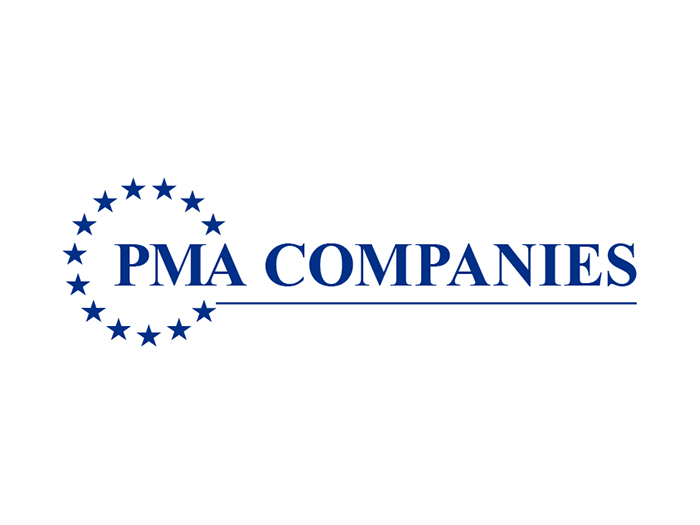Why Companies Are Partnering With Insurance to Maximize Risk Management Know-How
Apple has a decades-long track record of disrupting industries. From music to phones to fitness trackers, Apple’s forays into new sectors usually mean a paradigm shift for the industry in question.
Today, the tech giant has its sights set on the risk management field. But in this case, Apple is just one of a number of organizations taking new approaches to risk — companies such as Cisco, BMW and countless Insurtech startups are getting in on the action as well.
Fast-moving technologies and emerging sources of data are already creating a sea change in the world of risk management. In fact, new technology is creating whole new categories of risk with unique challenges.
Cyber risk is a perfect example. With constantly evolving dynamics and the potential for catastrophic losses, cyber risk is notoriously difficult to underwrite despite its growing prevalence.
At the same time, the constant flow of data is creating opportunities to more accurately evaluate and price risk factors.
New and robust sources of data are driving organizations to put an increased emphasis on limiting exposure in the first place through loss prevention and organizational resilience.
This approach minimizes the potential for unpredictable claims while maximizing the value of data in preventing incidents and claims. As the sources of data become more diverse and risks become more erratic, a range of companies are teaming up to facilitate a proactive approach to risk management.
Apple, Aon & Co. — A Holistic Approach to Corporate Cyber Risk
A robust partnership between Apple, Cisco, Aon and Allianz is one such union working to help businesses get ahead of unwieldy risk — particularly cyber threats.
Each player provides a special expertise.
Cisco and Apple business customers get access to cyber security tools, including Cisco’s Ransomware Defense services, and receive a cyber-resilience evaluation from Aon. The security and data gleaned from this collaboration enables Allianz to underwrite cyber security coverage with better terms and conditions and more favorable deductibles.
And it’s not just risk prevention; in the event of a malware attack, customers will have access to Cisco and Aon’s Incident Response teams for support and mitigation.
Each partner is playing a relatively traditional role — technology companies providing digital security protection, a broker providing risk analysis and consulting services, and a carrier underwriting the insurance policy.
Yet for the business customer, the benefit is cumulative. These combined services add up to a more comprehensive cyber security offerings than any individual organization alone could provide.
BMW and Swiss Re — Connecting the Dots With Connected Devices
These partnerships are playing out in the consumer insurance space as well.
In a recent press release, BMW and Swiss Re announced a “ground-breaking car insurance concept” focused on vehicle-specific insurance ratings that primary insurers can use to price coverage.
More and more vehicles offer driver-assistance safety features such as lane-departure warnings, active parking assistance and other sensors to prevent accidents. But the bulk of factors that make up a premium remain focused on the driver and traditional vehicle specifications, like make and model and horsepower.
Any pricing based on safety features is little more than a checkbox — either the car has the feature or it doesn’t.
The BMW and Swiss Re partnership turns that checkbox into an evolving analytics tool.
BMW will provide Swiss Re with data on which vehicles have which features as well as metrics for how effective those features are, including an advanced driving assistance systems (ADAS) risk score.
As Swiss Re accumulates more granular data on the impact of BMW’s features on accidents and other metrics, it will be better positioned to price the impact on risk and cost.
What makes this partnership significant is the willingness to share data. Swiss Re now has access to powerful metrics on driver behavior and vehicle safety performance.
It’s a trend we’ll see in more and more partnerships as manufacturers and consumer-facing brands strategically share data with risk management organizations. BMW and Swiss Re say that data sharing is a win-win for drivers who have safer vehicles and pay less for insurance.
The Power of Partnerships: 1+1=3
These unique new partnerships exist at the intersection of data and risk expertise.
Companies outside the insurance industry often have access to data from sensors, wearables and other Internet of Things (IoT) devices. Brokers, carriers and insurance professionals have the risk management know-how to turn that data into insights and proactive successes.
The results are mutually beneficial for end customers and individual partners.
Smart-home device manufacturer Nest (now owned by Google) recognizes the power of risk management insights powered by connected devices. Linus Lundberg, head of enterprise partnerships at Nest, described this cumulative benefit to McKinsey as a “one-plus-one-is-three proposition.”
Nest actively seeks out partnerships that combine its home devices and the data they gather with risk management know-how.
In a partnership with Liberty Mutual, policyholders receive Nest smoke detectors and get policy discounts when Nest confirms via WiFi that the smoke detectors are working. With their proactive approach, these partnerships are shifting the value proposition from reacting to preventing negative events.
Positioning Yourself as a Vital Partner
These examples of partnerships occurring in every kind of coverage and risk category are only the beginning.
Artificial intelligence and smart sensors are growing more advanced every day, and they’ll continue to accumulate staggering amounts of new data from new sources.
More and more disruptors will devote significant time and resources to finding ways to capitalize on this new paradigm and develop creative and effective ways to share data and risk expertise.
Risk management professionals need to think big about what’s possible in terms of data and partnerships. That means staying current on risk-related technology and monitoring trends, as well as becoming familiar with the many evolving techniques of analyzing risk data, including machine learning, text mining, social network analysis and natural language processing.
Traditional insurance organizations and others with risk management expertise should focus on refining their value proposition and exploring how they can best leverage existing customers, data and expertise to meet evolving challenges.
That may involve a drastic rethinking of the customer journey and the role partners play in that process.
Organizations that build these partnerships may likely be best positioned to succeed.
Striking the right balance between owning a solution and being open to collaboration is critical.
Identifying partners and what can be accomplished collaboratively will increasingly require an innovative approach to managing, pricing and mitigating risk. &










